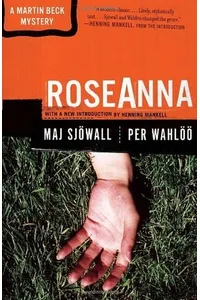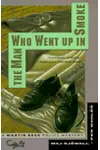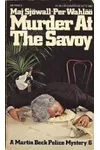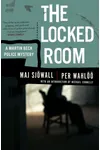Step into the gritty, captivating world of Martin Beck, where Stockholm’s streets pulse with mystery and human complexity! Created by Swedish duo Maj Sjöwall and Per Wahlöö, the Martin Beck series redefined police procedurals with its introspective detective and sharp social commentary. From 1965 to 1975, these ten novels, collectively titled 'The Story of a Crime,' blended meticulous investigations with a lens on Sweden’s evolving society, birthing the Nordic noir genre.
Unlike the flashy heroes of classic crime fiction, Martin Beck is a refreshingly real detective—dour, dyspeptic, and deeply human. His cases unravel the underbelly of a seemingly perfect welfare state, making readers question justice, morality, and bureaucracy. Ready to meet the detective who inspired a genre? Let’s dive in!
How Martin Beck Began
In the 1960s, journalists and partners Maj Sjöwall and Per Wahlöö set out to craft a new kind of crime novel. Both committed Marxists, they wanted to expose flaws in Sweden’s social system through gripping storytelling. They planned ten novels, each with 30 chapters, written alternately at their kitchen table after their kids were asleep. This disciplined collaboration produced a seamless style, blending realism with wry humor. Their goal? To show police work as tedious, human, and deeply tied to societal issues, with Martin Beck as their flawed yet dedicated protagonist.
The Heart of Martin Beck
The series kicks off with Roseanna (1965), where Beck investigates a young woman’s murder in Lake Vättern, piecing together clues over months to unmask a killer among 85 cruise passengers. The Laughing Policeman (1968), an Edgar Award winner, follows a mass shooting on a Stockholm bus, revealing a detective’s hidden case. The Abominable Man (1971) tackles police corruption as Beck hunts a sniper targeting cops. The Terrorists (1975), the finale, sees Beck thwarting an assassination while grappling with a flawed justice system.
Set in Stockholm’s moody, rain-soaked streets, the series weaves themes of alienation, institutional failure, and moral ambiguity. Beck’s methodical approach—no DNA tests or smartphones here—highlights dogged police work. Sjöwall and Wahlöö’s Marxist lens critiques capitalism and bureaucracy, but Beck remains apolitical, supporting his team despite their flaws. The alternating-chapter style keeps the pace brisk, balancing forensic detail with dark humor and vivid character studies.
Unlike sensationalized crime tales, these novels ground readers in Beck’s personal struggles—his failing marriage, his quiet resilience. The series’ realism and social focus make every case feel like a snapshot of 1960s–70s Sweden, from drug smuggling to terrorism, still resonating with modern readers.
Why Martin Beck Resonates
The Martin Beck series didn’t just launch Nordic noir—it shaped modern crime fiction. Writers like Henning Mankell (Wallander) and Stieg Larsson (Millennium trilogy) owe a debt to Sjöwall and Wahlöö’s blend of gritty realism and social critique. The series’ influence spans film and TV, with adaptations starring Gösta Ekman and Peter Haber, and even a 1973 Hollywood take, The Laughing Policeman, with Walter Matthau. Its timeless themes—corruption, justice, human fragility—keep fans hooked, while Beck’s everyman quality makes him a prototype for today’s flawed detectives.
- Publication Years: 1965–1975
- Number of Books: 10
- Notable Award: Edgar Award for The Laughing Policeman (1971)
- Genre: Police Procedural/Nordic Noir
Grab Roseanna and dive into Martin Beck’s moody, masterful world of Nordic noir!








